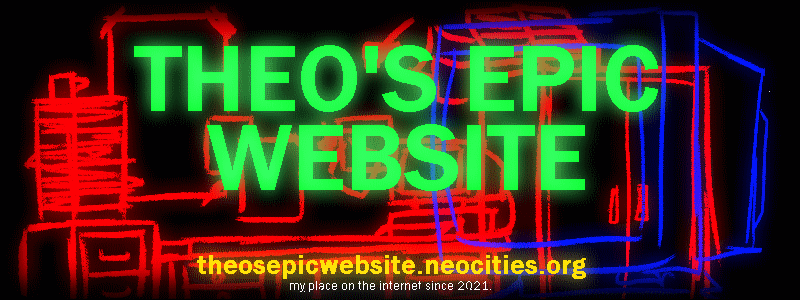
2001, a REAL Odyssey |
|
Uploaded: October 9th, 2024. Updated: October 9th, 2024. |
|
The year was 2001. well praticaly 2002 by october, and the majority of microsoft's worldwide domination is running from their buggy, clunky, and long aging 9x line of releases. |
|
^ The Desktop of Windows XP, accessable here
|
|
'New Technology' Windows and Microsoft's Game Plan When microsoft released Windows 95 six years prior they had essentialy sterilized the personal computer market, holding all manufacturers on a leash of their worldwide bribery campaign. while this cemented their position, as the worldwide leaders of personal computing they had to adapt their aging software architectures. Since Microsoft's skiszm with IBM in 1990 over OS/2, they smushed their section of the project into their own 'New Technology' architecture of Windows, initaly releasing in 1993. Windows NT was a fully 32-Bit operating system, not restricted by the vunerabilities and limitations of Microsoft DOS. but such new technology was not widley affordable to consumers, even with the rapid technology growth during the decade. So Windows NT was reserved for high-end computers, enterprise markets, and server management. But by the early 2000s, personal computers could comfortably work on the requirments of the NT product line, so Microsoft began development on Projects 'Neptune' and 'Oddysey', acting as the end-all for DOS based releases, transitioning users to the benefits and security of Windows NT through two seperate versions: Microsoft Neptune - Fully 32-Bit Operating System intended for Home users and Personal use.
Microsoft Oddysey - Full 32-Bit Operating System intended for Productivity and Buisiness use.
Project Neptune had some recorded and since archived builds, showing Microsoft's early inital features of improved usability and more dynamic interfaces to make computing easier. these elements were implimented way back in December 1999, almost 2 whole years before the release of XP, and the development of Whistler itself. While there are no recorded builds of the Oddysey project, Neptune's development didnt go far either, subsequently being merged into Microsoft Whistler and combining both personal and professional products into a cohesive development in January 2000.
|
|
Improved Usability and a new-age user enviroment Windows XP was not a filler project like Windows 98 or Windows ME. it was one of outright revamping and brand-new interface changes. A new millenium demanded a new look, and they delivered. - The boring grid of icons and text in the Settings was replaced with a new more visualy-appealing and approachable menu, showing icons, text, and spesific questions the user may have to guide their direction instead of fumbling through intrusive settings windows. - A whole new visual look. a livley and smooth blue interface, a properly revitalized two-column start menu, and a list of dynamicaly changing shortcuts to recently used or frequent programs to cut through the annoyance of all program dropdown menus. - Security and lacking vunerability. Windows XP by standard offered automatic updates similar to windows 98, and was praticaly immune and reflective against the 9x DOS viruses of previous releases. - 'New Technology' File System (NTFS). This file system allowed for drasticaly bigger hard disks and useage of memory more than 1 GB, and even allowing for individual files larger than 4 GB. Windows XP was all about bridging the gap for users to transition to the more reliable NT line of products, and quietly discontinuing pratical support for 9x between 2001 and 2003. And it did so with stunning success.
|
|
Windows XP Reception and Impact From it's release it cemented itself as a jack of all trades. It was new, it was secure. It was NTFS, not some DOS hybrid based of architecture dating all the way back to 1981 when 4MB of ram was considered insane. It was revolutionary in what it did for computer users and how approachable it was. It outlasted the contreversial and bloated Windows Vista release, with it only begining to be outpaced by Windows 7, a whole 8 years after XP's release! Even with its end of support in April 2014, it still ran on every 2 out of 100 computers around the world, and still lingers a little over half a single percent 23 YEARS LATER! Windows XP is going to lurk around for a long time because of its affordable standards and widespread use in primarily third world nations and point-of-service devices. Its been tailored for praticaly any use, seriously! just look at some of these editions: Windows XP Media Center Edition (2002) - Windows XP with an embedded Media Centre system built in, so you could make it a bonefied center for your songs, videos, etc. Windows XP Starter Edition (2004) - A stripped down version of Windows XP that confines the user to no more than 3 windows at a time, intended for poor third world countires that couldnt afford to get XP proper. Windows for Legacy PCs (2006) - An even more stripped down version of Windows XP for computers that could just about make the cut for minimum requirements, bringing NT reliablity to old systems. Look, my point is that it was a big deal for personal computing, praticaly the next major step after Windows 95 and its own multimedia revolution. this product cemented a permiating sense of nostalgia for young and old who used it, or never used it at all. its iconic i think, and of course i have some bias here. the background every user saw when they turned on their computers for the first time was a blissful field of green and an expanse of sunny blue skies above, and their eXPerience started there.
|
theosepicwebsite.neocities.org | 2021 - 2024 | hosted by neocities.org